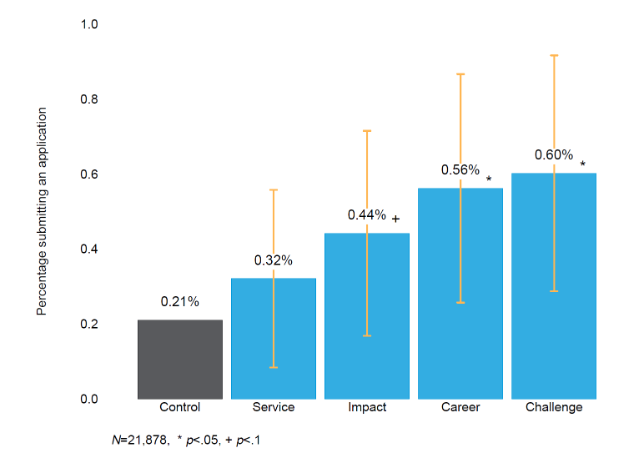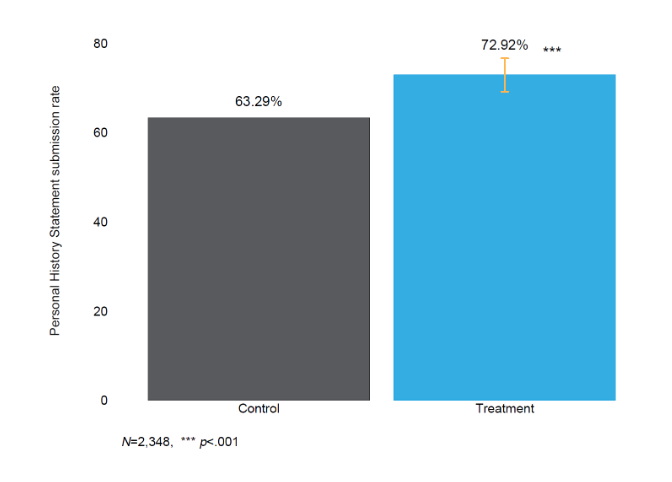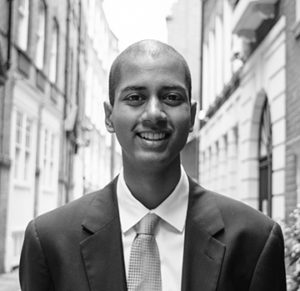Attracting great candidates from diverse backgrounds to join the public workforce is a key part of building governments that produce the best outcomes for residents. Over the past three years, BIT North America and Professor Elizabeth Linos from UC Berkeley have worked with police departments in more than twenty cities to understand the motivations of those currently in the police force and to apply lessons from behavioral science to the process of attracting and recruiting new police officers.
In total we conducted nine randomized controlled trials (RCTs) recruiting police officers with new messages, five RCTs encouraging candidates to move forward through the application process, and a survey of almost 1,200 police officers from twelve mid-sized departments across the country. Our new report presents an overview of this work, discusses lessons learned, and provides practical tips for those working in police recruitment and workforce development. The vast majority of this work was made possible through BIT’s role as a technical assistance provider in the What Works Cities initiative, funded by Bloomberg Philanthropies, which helps city governments improve residents’ lives through better use of data and evidence.
Three Key Themes
Our work so far has informed the following conclusions:
1. Cities should tap into new sources of motivation
Even small changes in how jobs are advertised can make a real difference in both the total number of applicants and the diversity of those applicants. Policing has traditionally been framed as a public service job, and when we asked active officers to assign scores to a range of different reasons for taking the job, a desire to “help people in the community” consistently came out top. When it comes to motivating new applicants, however, the story gets more complicated.
For example, in Chattanooga, Tennessee, postcards asking “Are you ready to serve?” were no better at soliciting applications than sending no postcard at all. But postcards asking “Are you up for the challenge? or “Are you looking for a long-term career?” attracted three times more applicants than the no-postcard group and drove a fourfold increase in applications from people of color (Linos, 2017).
 If a department has already reached all the people who are looking for jobs purely based on the service component, using new messages may attract a different audience who are looking for a job that provides something else—such as belonging or a long-term career.
If a department has already reached all the people who are looking for jobs purely based on the service component, using new messages may attract a different audience who are looking for a job that provides something else—such as belonging or a long-term career.
2. The application process matters
Sending in an application is really just the beginning of the long and often very complicated process of becoming a police officer. As behavioral scientists, we don’t think about deciding to join a police force as a one-time decision. Rather, we think of it as a series of micro-decisions at each stage in the process, where a candidate can choose to persevere, moving to the next step; or decide that the opportunity cost is too high and the hurdle too large to keep going. Small changes to how candidates experience each stage of the process may be the difference between them sticking with it and dropping out.
In Los Angeles, we worked with the personnel department to simplify the process for applicants to submit their Personal History Statement (PHS)—a long but crucial form that launches the background screening process. This was the stage in the process when most people, 35 per cent, dropped out. By revamping the email candidates received inviting them to turn in their PHS and reminding them to do so with a short text message, we increased the number of people who submitted the form by 15 per cent and the number who submitted it quickly – in less than two weeks – by nearly 40 per cent (Linos & Riesch, 2019 – Working Paper).

3. The best recruits may already be in or near the pipeline
Police departments may think they need to search far afield to find more candidates, but it might be wiser to look closer to home. It should not be surprising that those who have previously expressed interest in policing or other public sector jobs are likely to be interested again in the future, or may just need additional support to persevere through the application process. For example, in Scottsdale, Arizona, we sent emails inviting applications from three groups we thought might be highly motivated: those who had already applied to the police, those who expressed interest in other city jobs, and community college students preparing to enter the labor market. While email solicitations are generally less successful than direct mail, the emails more than doubled the number of applications in Scottsdale.
We also conducted a trial with previous applicants in San Jose who had dropped out of the process. After we reached out and asked them to give some feedback and consider reapplying, 125 potential candidates reactivated their applications by sending in their test scores. Conducting this outreach often involves only a small investment of effort; thus, we recommend that recruitment staff in police departments consider their prior applicant pool as potential future recruits.
What’s Next?
In studying decision-making, it is critical to step into the shoes of the decision-maker and build a full picture of their context and environment. Understanding how people see the police, their self-perception, and their other career options can make all the difference in whether an applicant’s interest is piqued or not.
There is no single answer here; in every city, in every neighborhood, even in every individual experience, there will be different contextualizing factors. From poor police-community relations to higher-paying neighboring police forces to feeling like they don’t belong, there may be many reasons why well-suited candidates decide not to apply. Local context matters; departments must test and hone their recruitment approaches accordingly. More guidance for conducting this work with police forces or other public agencies can be found in the Practitioner Appendix of the report.
While attracting new and different candidates to apply to law enforcement jobs makes a valuable contribution to building effective and representative police forces, we recognize that this is just one piece of the puzzle. Some of our other projects are looking at the impact of body worn cameras on police behavior, the effects of mindfulness training, and how to reduce unnecessary demand for police services. For all of these areas, the lessons of this recruitment work ring true: we must understand the things that truly drive those working in the public service; examine closely the contextual factors that color day to day experience; and think about how to best use the talent we already have.
We have just begun to scratch the surface, but by drawing on topical expertise, proven research methods, and innovative thinking, we can continue to make improvements in the fields of policing, public service, and public safety.







